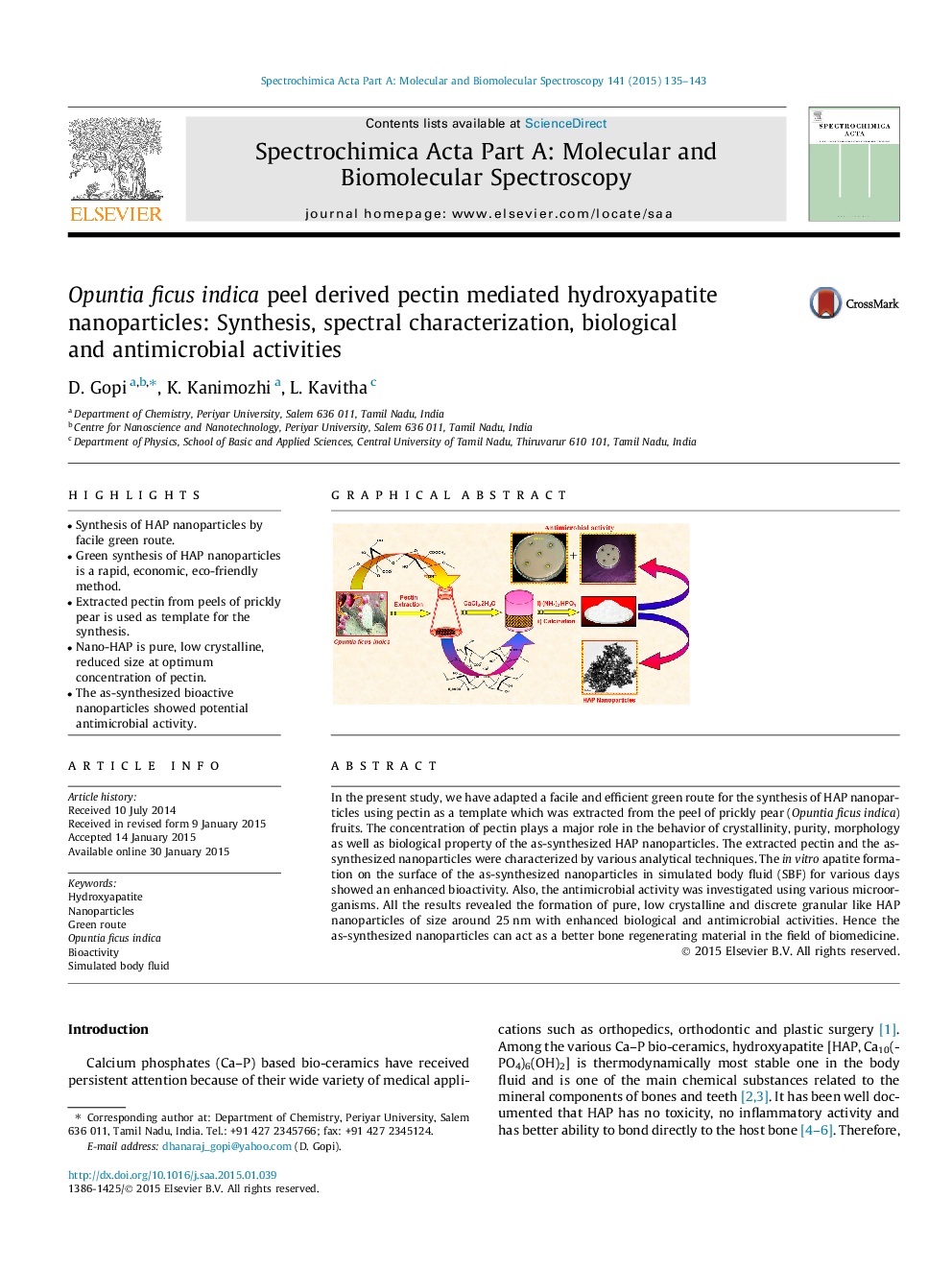| Article ID | Journal | Published Year | Pages | File Type |
|---|---|---|---|---|
| 1232397 | Spectrochimica Acta Part A: Molecular and Biomolecular Spectroscopy | 2015 | 9 Pages |
•Synthesis of HAP nanoparticles by facile green route.•Green synthesis of HAP nanoparticles is a rapid, economic, eco-friendly method.•Extracted pectin from peels of prickly pear is used as template for the synthesis.•Nano-HAP is pure, low crystalline, reduced size at optimum concentration of pectin.•The as-synthesized bioactive nanoparticles showed potential antimicrobial activity.
In the present study, we have adapted a facile and efficient green route for the synthesis of HAP nanoparticles using pectin as a template which was extracted from the peel of prickly pear (Opuntia ficus indica) fruits. The concentration of pectin plays a major role in the behavior of crystallinity, purity, morphology as well as biological property of the as-synthesized HAP nanoparticles. The extracted pectin and the as-synthesized nanoparticles were characterized by various analytical techniques. The in vitro apatite formation on the surface of the as-synthesized nanoparticles in simulated body fluid (SBF) for various days showed an enhanced bioactivity. Also, the antimicrobial activity was investigated using various microorganisms. All the results revealed the formation of pure, low crystalline and discrete granular like HAP nanoparticles of size around 25 nm with enhanced biological and antimicrobial activities. Hence the as-synthesized nanoparticles can act as a better bone regenerating material in the field of biomedicine.
Graphical abstractFigure optionsDownload full-size imageDownload as PowerPoint slide
